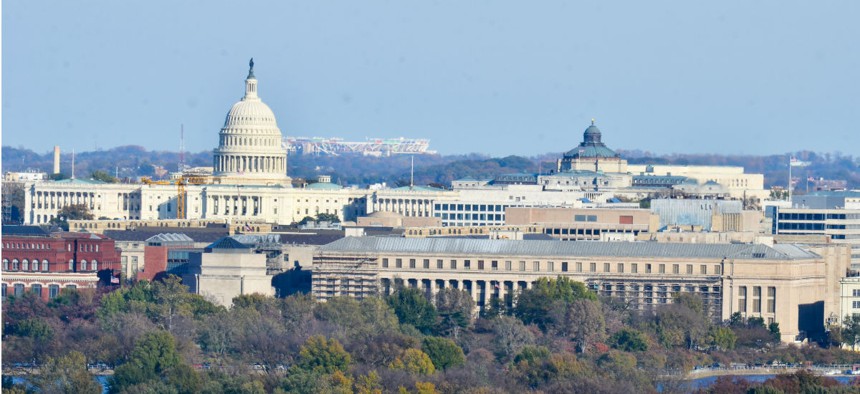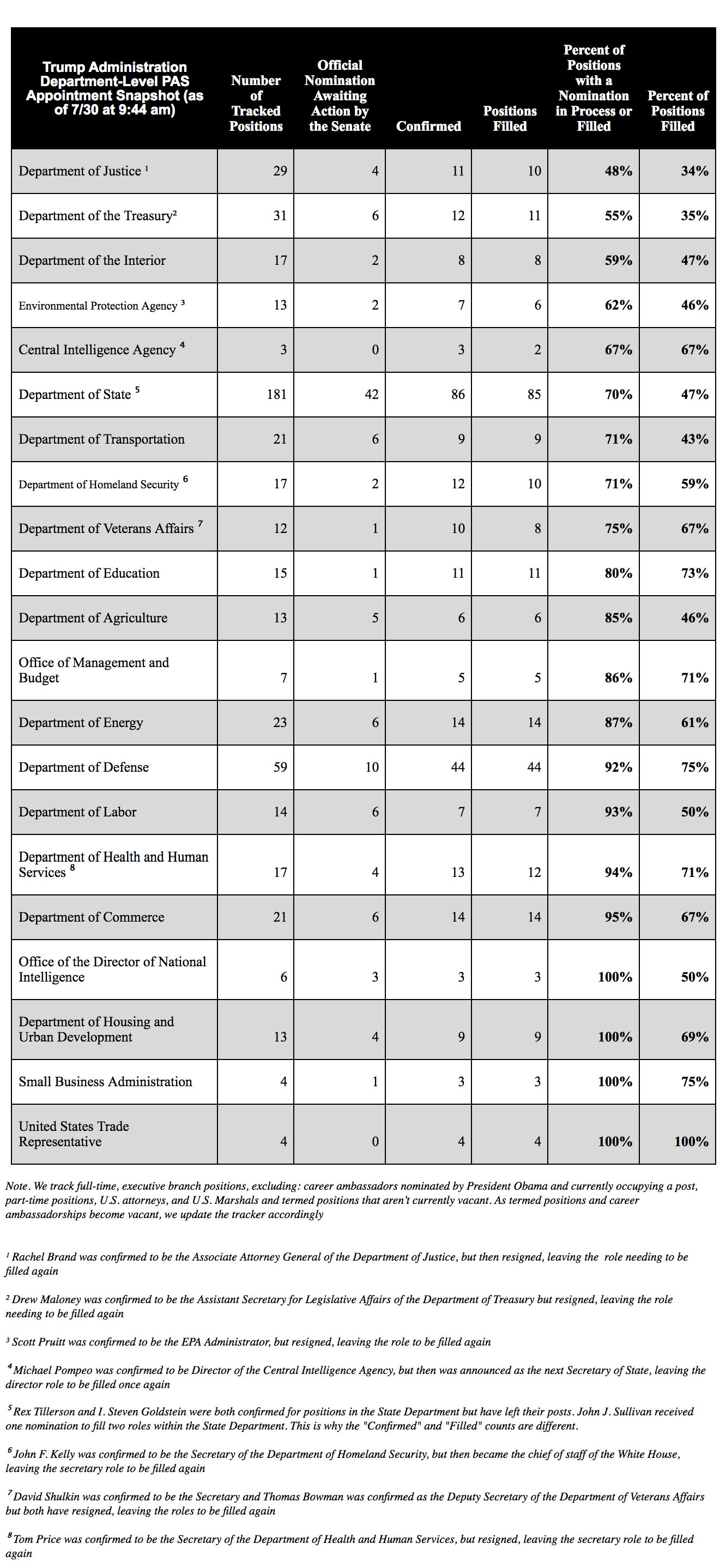Vacancy Rate for Top Agency Jobs Continues to Set Records
After 17 months, only half of key appointments have been filled. That’s on top of the highest turnover of top-tier staff of any recent president.
The Trump administration continues to lag behind previous administrations in filling top jobs across government. Seventeen months into his presidency, President Trump has filled 346 out of 686 key posts jointly tracked by the Partnership for Public Service and the Washington Post.
It’s not just the administration that is slow. According to the latest numbers, 168 nominees await Senate confirmation in a process that has averaged 89 days, 10 days longer than what the Senate averaged during the Obama administration. Ninety-four of Trump’s nominees failed to garner Senate confirmation. As of Aug. 1, the administration had not named anyone for 167 key posts, according to the political appointee tracker.
The analysts highlighted that no nominee has been announced for such major posts as the assistant secretary of State for South Asian affairs; the deputy secretary and the undersecretary for health at the Veterans Affairs Department; the deputy secretary at the Homeland Security Department; the director of the Bureau of Alcohol, Tobacco, Firearms and Explosives, the administrator of the Drug Enforcement Administration at the Justice Department and the administrator at the Environmental Protection Agency.
The Justice, Treasury and Transportation department have the most vacancies. The fewest are at the U.S. Trade Representative, the Defense Department and the Small Business Administration.
A slightly different set of numbers released in late May by the academics at the White House Transition Project, based at the University of North Carolina-Chapel Hill, is no more favorable to Trump.
“Overall, President Trump’s nominations continues to trail previous administrations, now by a bit more than five months, the worst performance in 40 years,” the analysts said. But “on critical leadership positions, President Trump has closed the gap considerably and now lags previous administrations by three and a half months.”
Their data also show that about 20 percent of the time taken for a confirmation is eaten up by the Senate, which over the past three decades has extended the average time it takes to bring a nominee to a vote. Though Trump’s average time of 308 days for identifying nominees is the highest, the Senate’s average time for moving White House nominations has also grown, from 28 days under President Reagan to 57 under George H.W. Bush to 78 under Obama to 101 under Trump.
“On the other hand,” they continued, “beginning in June 2017, the Trump White House has done a decidedly better job at shortening the time from an announcement of a nominee to moving that nominee to the Senate for confirmation. Previous administrations averaged around 28 days while the Trump team currently averages 15 days.”
Recent research on White House transitions by the project principals Martha Kumar and Terry Sullivan also documents high White House staff turnover under Trump. At his 17-month mark, Trump had “the highest turnover of top-tier staff of any recent president,” they write. Losses at the level of assistant to the president are: Trump, 61 percent; Obama, 14 percent; George W. Bush, 5 percent; Clinton, 42 percent; George H. W. Bush, 19 percent; and Reagan, 29 percent.
The Partnership released the following breakdown of top-level vacancies at the major departments.





